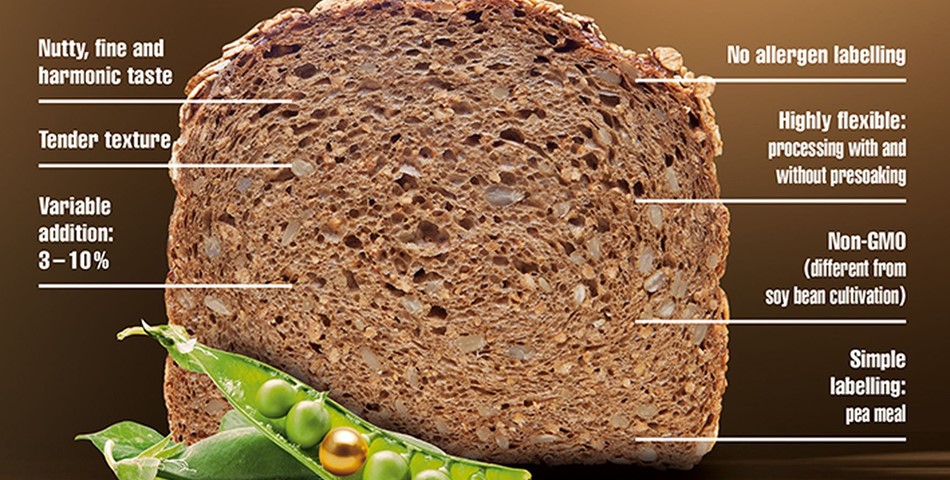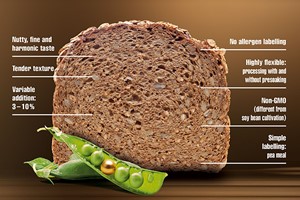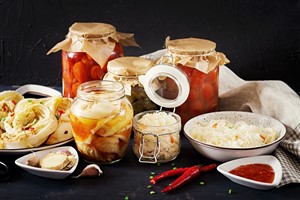When tracing back the roots of baking, we find ourselves among the ancient Egyptians, who first began to bake breads in the form they are familiar to us today, using sour dough. Today, some 5.000 years later, while sour dough is still a key component in bread production, the bakery market has evolved somewhat.
Modern consumers are able to choose from an almost limitless variety of different products - from rustic baked goods to fine pastries and a myriad of snacks, every category offers numerous possibilities. Interestingly though, many of today's most popular trends are going "back to their roots", reflecting a consumer need for simplicity as well as authentic and natural ingredients.
Pulses and cereals are perfect examples of this. Now enjoying a real revival as bakery ingredients, they cover lots of bases - tradition and innovation, health benefits and outstanding taste, natural provenance and plentiful availability and, last but not least, functionality.
Clean Label trend
Across the food industry as a whole, it is also evident that less is definitely more. While the Clean Label trend that emerged some years ago was all about finding alternatives for synthetic additives, "free from" now means that a product does not contain certain ingredients that could cause adverse health reactions.
Although brands might define the term "free from" in slightly different ways, according to OF+ Consulting, this expression "is a catch-all term used to denote food and drink that has been designed to exclude one or more ingredients to which at least some consumers can have either an allergy or an intolerance". With the reported incidence of food allergies and intolerances having grown enormously, there is a real need for "free from" products that taste great yet don't have the potential to trigger health problems. The benefits of satisfying these demands are demonstrated perfectly by the prosperous gluten-free market.
This sector is enjoying a boom in popularity because manufacturers are offering products that are not only suitable for those with food intolerances and allergies but which also taste delicious - so much so that they are often bought by consumers who don't need to avoid gluten on health grounds.


A smart link
From its very beginnings, GoodMills Innovation has focused on natural yet functional ingredients. One vital pillar of the company's philosophy is that its market development activities are backed by scientific collaborations. One recent example of this is the LeguAN project, which was coordinated by the German authorities with the aim of producing foods and food ingredients based on locally grown plant proteins in an efficient way and according to market needs. Experts from GoodMills Innovation took part in this project and were instrumental in the development of a valuable, natural and domestically grown alternative to soy beans.
Peas: Multiple advantages over soy
The LeguAN project was hugely successful, and it led the company to rediscover the almost forgotten yellow podded snow pea, which it then developed into a baking ingredient called YePea (abbreviation of Yellow Peas). In contrast to soy, YePea scores with its non-allergenic potential. Furthermore, it is guaranteed non-GMO and its raw materials are only grown in Europe.
From a nutritional point of view, one of the ingredient's biggest benefits is its low fat content, which is 90 per cent less than that of soy meal. As well as being beneficial to health, this lower fat content results in longer shelf life. Furthermore, YePea contains higher levels of complex carbohydrates and dietary fiber.
Applications


Baked goods
The ingredient made from yellow peas is a perfect and natural alternative to soy meal and can be used for breads and rustic, small baked items as well as premixes. YePea provides baked goods with a light yellow color, a ?ne nutty ?avor and a good texture: end products gain a crunchy crust and tender crumb as well as a well-balanced ?avor profile. From a technical point of view, the cracked yellow peas improve the texture and water binding capacity of end products too.
Confectionery and cereal bars
The cracked peas are also perfect for creating new allergen-free product concepts. They can be used to replace chopped nuts as ingredient in toppings and they ensure a crunchy texture and a nutty flavor in cereal bars. Another benefit is that, unlike nuts, peas are readily available year-round and they are a more cost-efficient ingredient. "Pulses as a source of vegetable proteins are enjoying a tremendous renaissance at the moment, and peas are especially popular thanks to their excellent protein profile," says Michael Gusko, Managing Director of GoodMills Innovation. "With YePea, we are demonstrating that it is possible to deliver outstanding taste, a valuable nutritional profile, hypoallergenic and Clean Label status as well as easy processing, all at the same time from one economical source," he added.
Informed choices
For people with food allergies and intolerances, it is especially important to be able to make safe and informed decisions about the foods they choose to buy. Therefore it is vital that manufacturers label their products correctly. In Europe, this is covered by the new allergen regulation (EU) Nr. 1169/2011, which is intended to improve the visibility of allergen labelling on food packaging. Manufacturers as well as ingredients suppliers have a legal obligation to adhere to these regulations and to ensure a transparent and traceable supply chain from farm to fork.
Summary
While for many people food allergies and intolerances used to be synonymous with deprivation, modern ingredients have succeeded in putting taste and indulgence back into the bakery. Ingredients with natural and traditional provenance also satisfy the growing consumer desire for simple ingredients. In order to be used in food production, these ingredients must also satisfy certain legal requirements - such as the recently introduced EU allergen labelling regulation.














